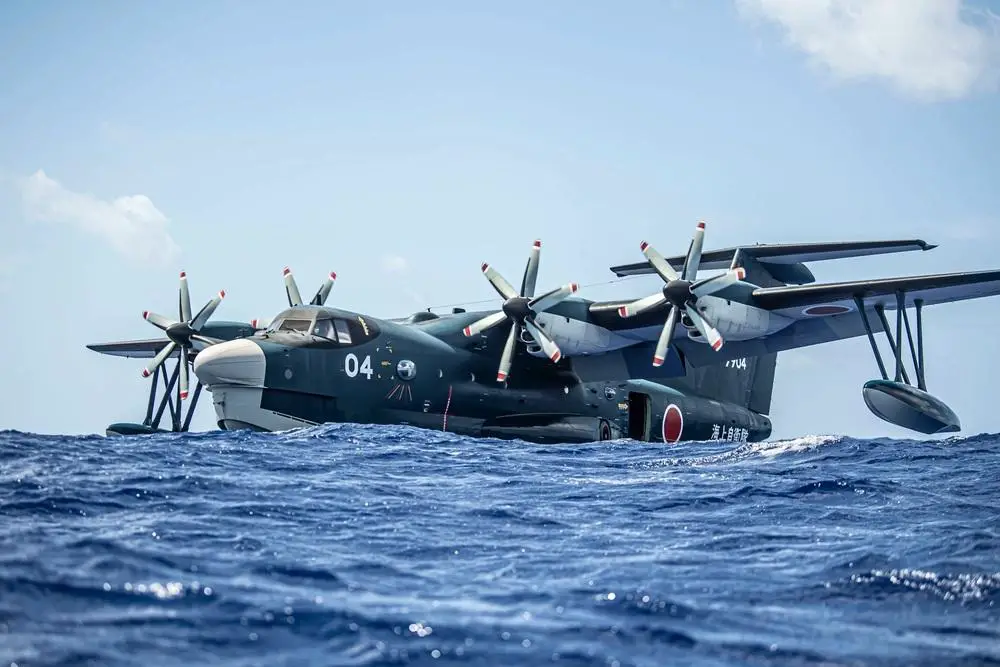A Japan Maritime Self Defense Force (JMSDF) ShinMaywa US-2 floats in the ocean during exercise Cope North 22 at the Island of Tinian near Andersen Air Force Base, Guam, Feb. 14, 2022. Japanese and U.S. Air Force members trained together in participation of Cope North 2022, multilateral U.S. Pacific Air Forces-sponsored field training exercise conducted annually at Andersen AFB, Guam focused on combat air forces’ large-force employment and humanitarian assistance and disaster relief training to enhance interoperability among U.S., Australian, and Japanese forces. Cope North enhances U.S. relationships with our regional allies and partners by fostering the exchange of information and refining shared tactics, techniques and procedures to better integrate multilateral defense capabilities and enhance interoperability in support of regional security.

The ShinMaywa US-2 is a Japanese large short takeoff and landing amphibious aircraft developed and manufactured by seaplane specialist ShinMaywa (formerly Shin Meiwa). It was developed from the earlier Shin Meiwa US-1A seaplane, which was introduced during the 1970s. The ShinMaywa US-2 was developed on behalf of the Japan Maritime Self-Defense Force (JMSDF), which was procuring the amphibian to replace its aging US-1A fleet. In Japanese service, it is operated in the air-sea rescue (ASR) role. The US-2 can also be used in other capacities, such as an aerial fire fighter, carrying 15 tonnes of water for this mission. . The type is currently operated by the 31st Fleet Air Wing (71st Air Force, 71st Flight Squadron) of the JMSDF from both Iwakuni Air Base and Atsugi Air Base. The introduction of the US-2 has enabled the withdrawal of the US-1A, the last of which performed its final flight during December 2017.















